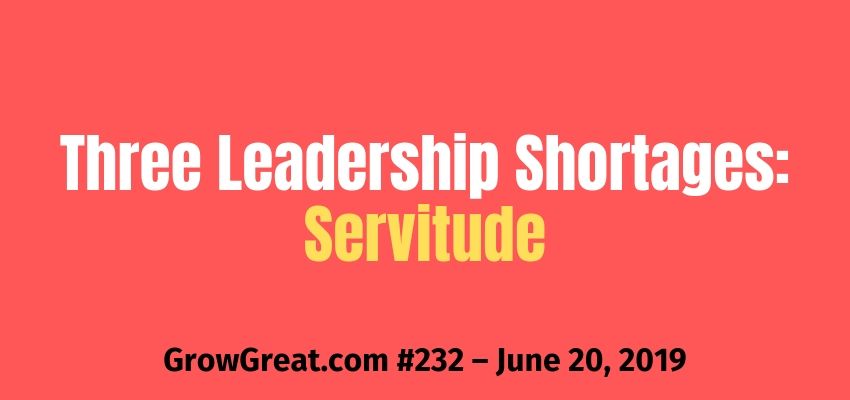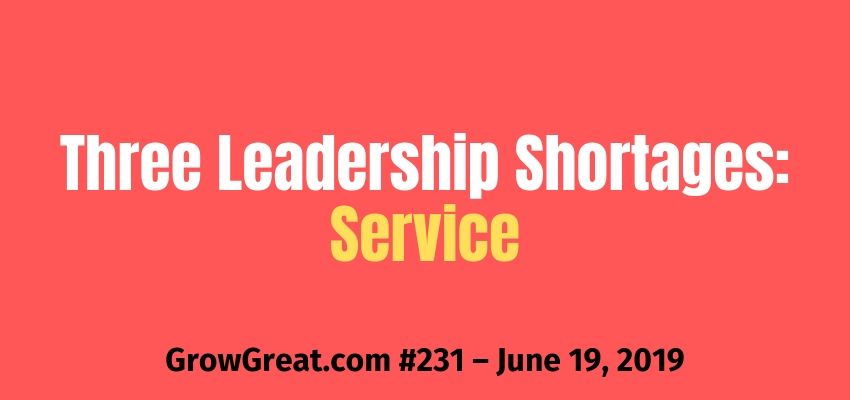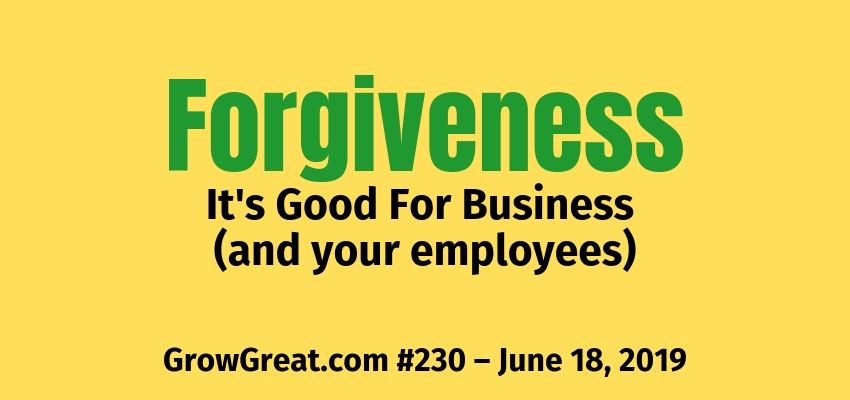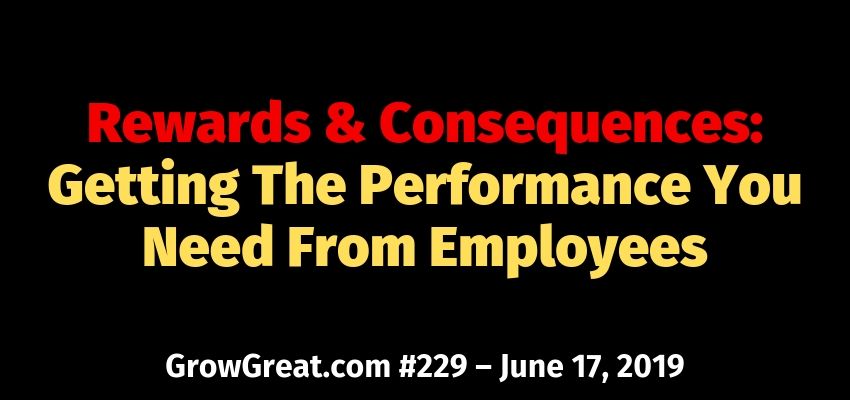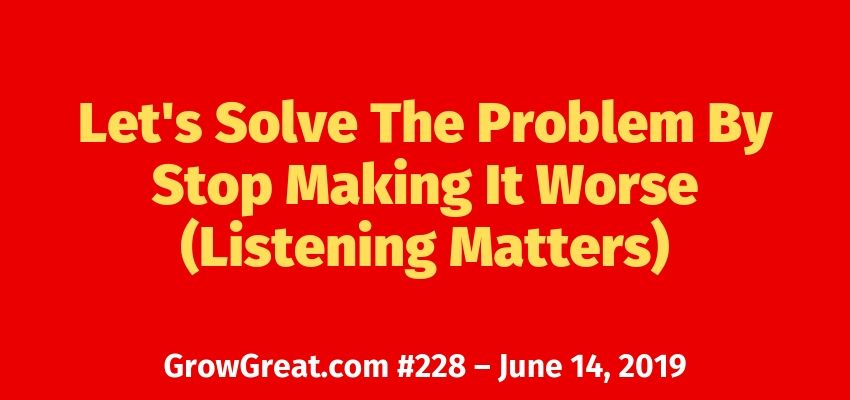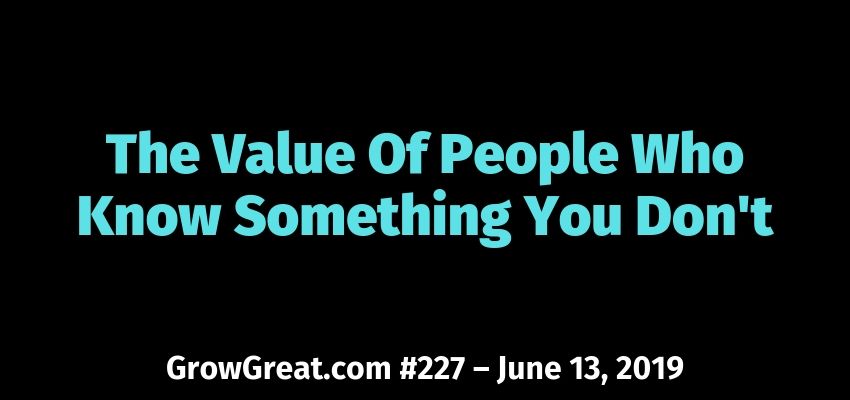Three Leadership Shortages: Servitude – Grow Great Daily Brief #232 – June 20, 2019
Podcast: Play in new window | Download (Duration: 6:07 — 7.5MB)
Subscribe: Apple Podcasts | Spotify | RSS | More
We continue our conversation about the 3 leadership shortages I see regularly. Today’s topic will seem identical to yesterday’s. SERVITUDE.
the state of being a slave or completely subject to someone more powerful
Yesterday we focused on serving your people. It’s about putting the needs of your people ahead of your own.
Today it’s about customers. Think of service as internal and servitude as external. That’s how I’m using these terms.
I know you’re the boss and you enjoy thinking, “I answer to no one.” But we both know the truth – you answer to everyone! Most especially to the customers you have.
Great leadership has an intense focus on making customers happy. It’s determined by the leader’s commitment to surrender to this group of people who hold greater power, customers.
There’s a key to this leadership gap. It’s not complicated. And it’s completely within your ability and personal power. It can happen instantly.
Here it is…
Make up your mind. Do it right now.
Decide.
Commit in your mind.
Surrender to your customers.
Decide that servitude is how you’ll roll from now on.
A few things stand in your way. I know from years of coaching CEOs and business owners.
Ego. If it’s not number one, it’s number two. Your own pride and self-will stops you from lots of growth and progress. Don’t fret. You’re in grand company. It does the same thing for me and every other entrepreneur. Well, the fact is you don’t even have to be an entrepreneur for it to plague you. It corrupts all of us.
Give it up. Decide that pleasing yourself is far less profitable for your business and career than pleasing customers. Learn the truth of that. Persuade yourself. Spreadsheet it. Data mine it. Google it. Do whatever you have to in order to come to the realization that it’s true. Because it is.
Profit. Think of ego and profit as interchangeable number one obstacles. An awful lot of business owners and CEOs believe being in servitude to customers will cost too much profit. They wrongly think they can’t afford it. It’s just too expensive to make customers happy.
Listen to the ridiculousness of that logic. Making customers happy is too expensive? Well, it’s not nearly as expensive as making them angry, dissatisfied, unhappy or indifferent. Those efforts may have lower up-front costs, but they have extraordinarily high long term costs. Fact is, that kind of behavior on the part of your company will fast track your company to bankruptcy.
Shallow thinking about how to build a business – aiming for today’s transactions instead of a deep, rock-solid customer base and aiming to satisfy your own ego – stop CEOs and entrepreneurs in their tracks. It cripples growth and expansion. It weakens customer bases. Fools us into thinking today’s transactions will be sustainable. All the while customers are growing increasingly dissatisfied. Word is spreading. Worse yet, we’re incorporating apathy throughout our company culture – apathy toward customers. And shoppers. And prospects. Or the absolute worst…we contribute to forming a culture where our shoppers, prospects, and customers are despised.
If your organization openly mocks or makes fun of customers, then look in the mirror. You’ve got a servitude gap in your leadership. It’s your fault. And you can fix it. The organization will follow your lead.
Pay attention to the language and the behavior inside your organization. Look for expressions of disdain. Stamp it out. Don’t tolerate it. But mostly, look in the mirror and gauge your own displays of servitude. If they’re lacking, then get your act together. Push your servitude to the top of the hit parade. Make it meaningful, not just lip service.
Then drag your pulpit around and preach the message. Share why it’s important and why you’re making it the top priority. Teach and train your people how to more properly display love for customers at every encounter. Include prospective customer in your displays of love.
Lead the way. Then preach the way. Don’t accept anything less.
Be well. Do good. Grow great!
Randy
Three Leadership Shortages: Servitude – Grow Great Daily Brief #232 – June 20, 2019 Read More »
